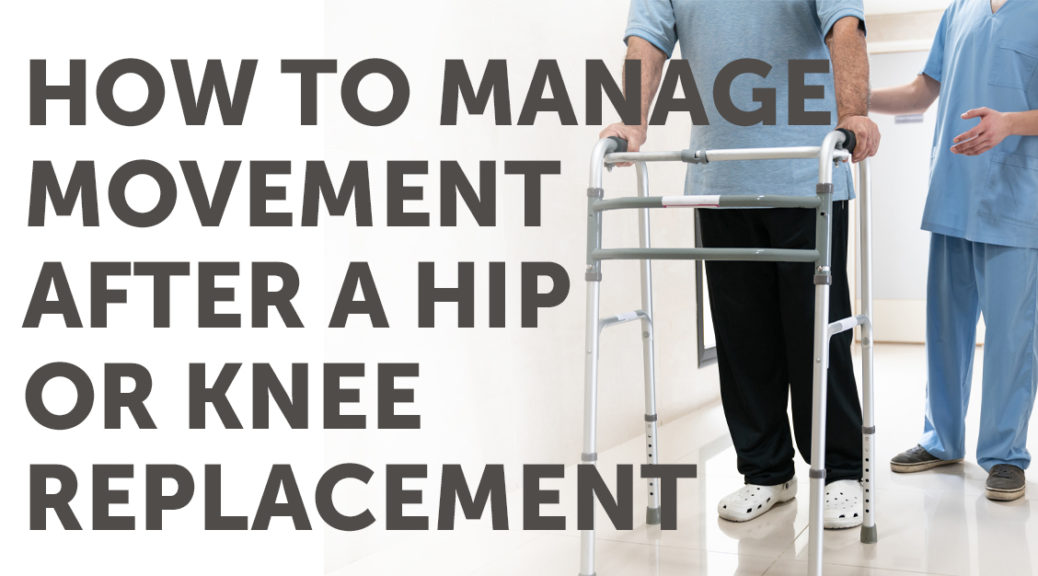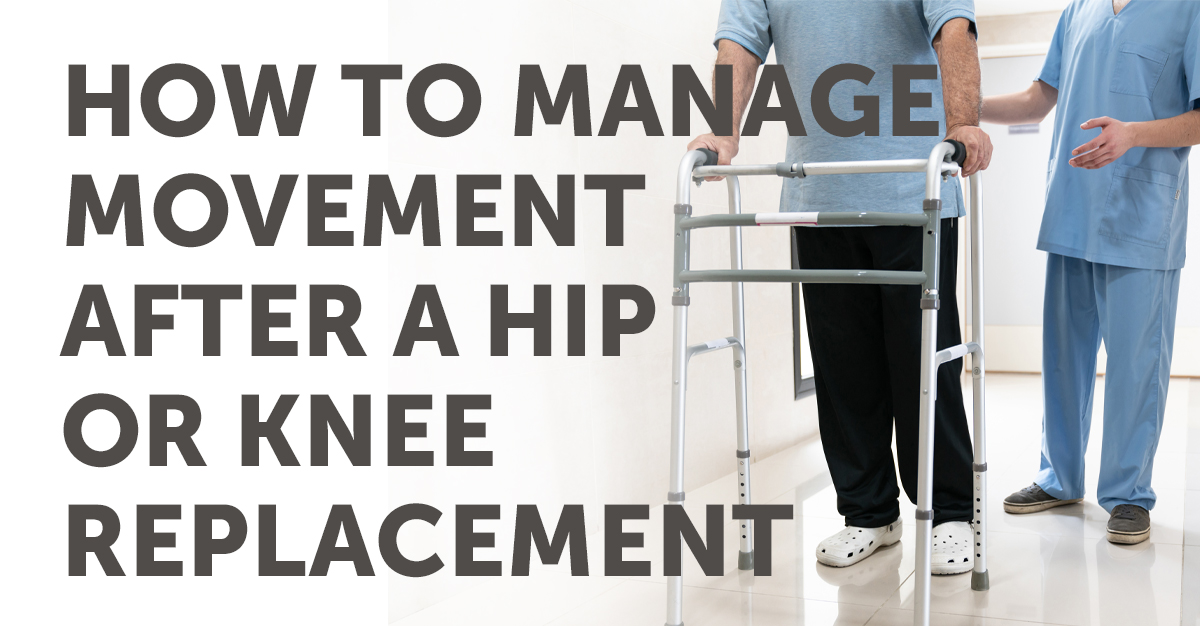
After going through total replacement surgery, it can be difficult to move around. Shortly after discharge, but before outpatient physical therapy begins, most patients will be seen by a home health nurse or physical therapist. Their visits with you will focus on making sure the wound heals properly and that you are able to perform essential functions around the home. This can include bathing, getting in and out of bed, and even walking up and down the stairs. In this upcoming series of blog posts, we will be showing you how to safely manage movement after a hip or knee replacement. We would like to begin by preparing your home before you go into surgery. We call it our pre-op prep!
Simple things you can do to make your home safer and more comfortable as you heal from a joint replacement.
- Keep a cordless phone near you or carry your cell phone in your pocket.
- Move furniture to keep a clear wide path to your kitchen, bathroom, and bedroom.
- Remove throw rugs that may cause you to slip or trip. Tape down any loose edges of large area rugs that cannot be removed. Make sure extension cords are out of traffic areas or tape them down if needed.
- Wear rubber-soled shoes to prevent slipping.
- Keep commonly used items in your home at waist level within easy reach. This will prevent you from bending over to reach items. Use a reacher to grab objects and avoid excessive bending at the hip.
- Make sure there is adequate lighting in the house. Add night lights in hallways, bedrooms, and bathrooms.
- It may be helpful to have a temporary living space on the same floor if your bedroom/bathroom is located on the second floor of your home. Walking up/downstairs will be more difficult immediately following surgery and could increase your risk of falls.
- Arrange for someone to collect your mail and take care of pets or loved ones if necessary.
- Prepare frozen meals in advance to assist you with cooking.
- Stock up on groceries, toiletries, and any medications you might need.
- Purchase a shower chair or a tub bench will make bathing much easier. Do not take soak baths until your physician allows you to do so.
- Install an elevated toilet seat. This will be helpful with toilet transfers and with following post-surgical precautions or guidelines.
- Purchase assistive devices for dressing such as a reacher, extended shoehorn and/or sock aid may be necessary during your post-operative recovery.
After surgery, your health care provider will show you how to use a walker. Use your walker for as long as directed by your surgeon. This is important since the walker relieves some of the weight off of the leg and can protect it, even when just taking a few short steps.
Steps to take while using your walker on a level surface
- Advance the walker
- Step up to the walker with your surgical leg
- Next, step forward with your nonsurgical leg
- Make sure all four legs of the walker are in firm contact with the floor or ground.
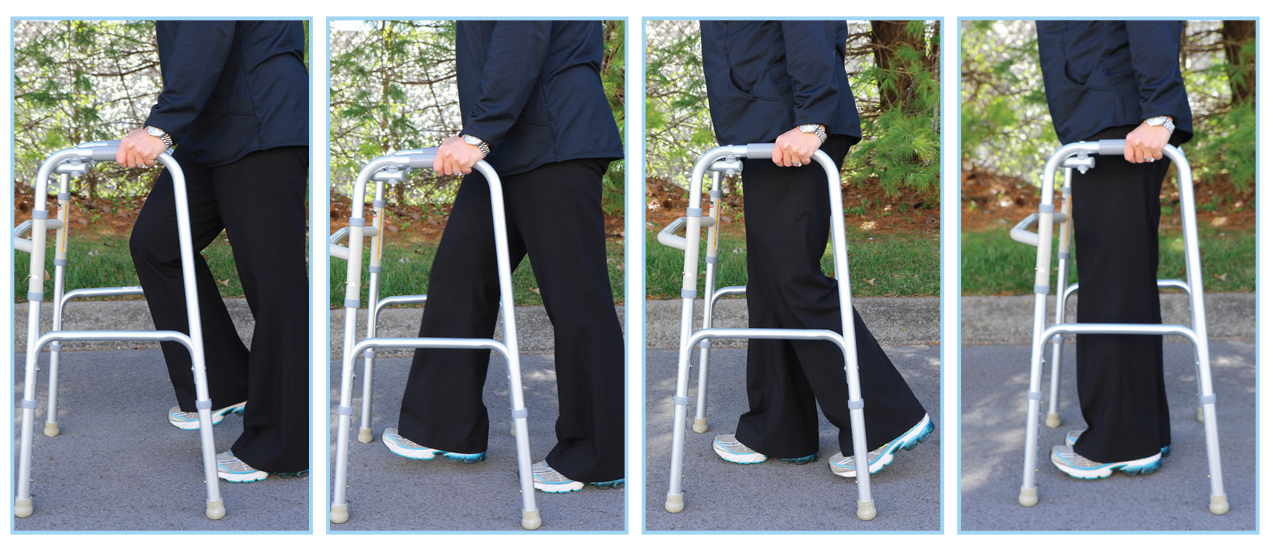
How to use your walker while going upstairs
- Place your walker sideways with the opening toward you.
- Firmly grasp the stair rail with one hand and the walker with your other hand.
- The walker’s legs should be against the stair riser with all four legs in contact with the stairs. (2 legs on the top step, 2 legs on the lower step)
- Step up with your nonsurgical leg.
- Follow with your surgical leg to the same step.
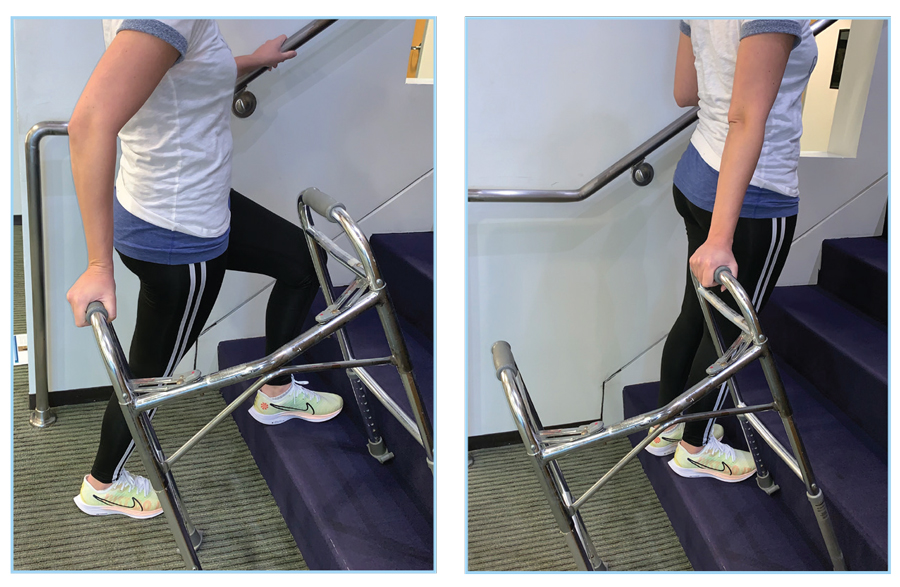
How to use your walker while going downstairs
- Place your walker sideways with the opening toward you.
- Firmly grasp the stair rail with one hand and the walker with your other hand.
- The walker’s legs should be against the stair riser with all four legs in contact with the stairs. (2 legs on the top step, 2 legs on the lower step)
- Step down with your surgical leg. Follow with your nonsurgical leg to the same step.
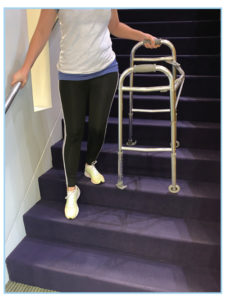
The tips above will work in most cases, but not all. It is important to follow the advice and restrictions given to you by your health care provider. In our next post about how to safely manage movement after a hip or knee replacement, we will be covering the proper steps for getting in and out of chairs and the bed. We wish you all the best in recovery. If you are looking for an outpatient physical therapy clinic please stop by the Find a PT page.

